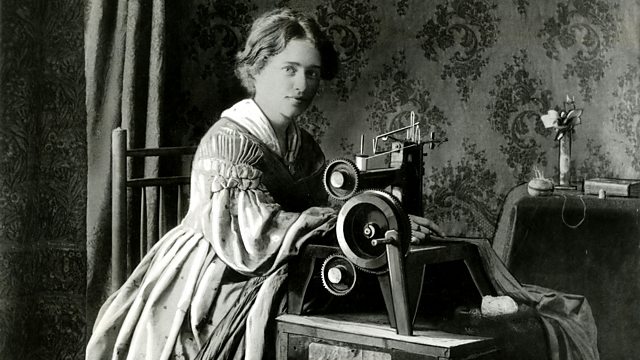Sewing machine
Women's lives were transformed by the sewing machines Isaac Singer built - though he himself had no interest in driving social change.
Women's lives were transformed by sewing machines, which made a "never-ending, ever-beginning task" far less arduous and time-consuming. But Isaac Singer, who made his fortune from these devices, was far from a champion of women's rights. Tim Harford tells a story of how self-interest can sometimes be a powerful driver for social change.
Last on
Image credit
Sources
We Believe: The Best Men Can Be | Gillette (Short Film)
Woke Capitalism: Big Business Pushing Social Justice Issues
Singer and the Sewing Machine: A Capitalist Romance. Ruth Brandon, 1977. Barrie & Jenkins Ltd: London. p21, p41, p42, p44 and p45
The rise and fall of the first American patent thicket: The sewing machine war of the 1850s. Adam Mossoff, 2009. Arizona Law Review Vol 53:165
Singer and the Sewing Machine: A Capitalist Romance. Ruth Brandon, 1977. Barrie & Jenkins Ltd: London.p120 - p121, p124, p125 and p127
From the American System to Mass Production – 1800-1932. David A Hounshell, 1984. Johns Hopkins University Press, Baltimore. Ch 2.
Selling the Sewing Machine Around the World: Singer’s International Marketing Strategies, 1850–1920. Andrew Godley, March 2006. Enterprise and Society 7(2)
Godey’s Lady’s Book and Magazine, 1860, Godey Company, Volume 61, page 77.
Broadcasts
- Saturday 05:50GMTBBC World Service except East and Southern Africa & South Asia
- Saturday 14:50GMTBBC World Service News Internet
- Sunday 14:50GMTBBC World Service East and Southern Africa & West and Central Africa only
- Sunday 15:50GMTBBC World Service Australasia, UK DAB/Freeview, News Internet, Online & Europe and the Middle East only
- Sunday 22:50GMT
- Monday 04:50GMTBBC World Service South Asia
Podcast
-
![]()
50 Things That Made the Modern Economy
The stories of inventions, ideas and innovations which helped create the economic world


